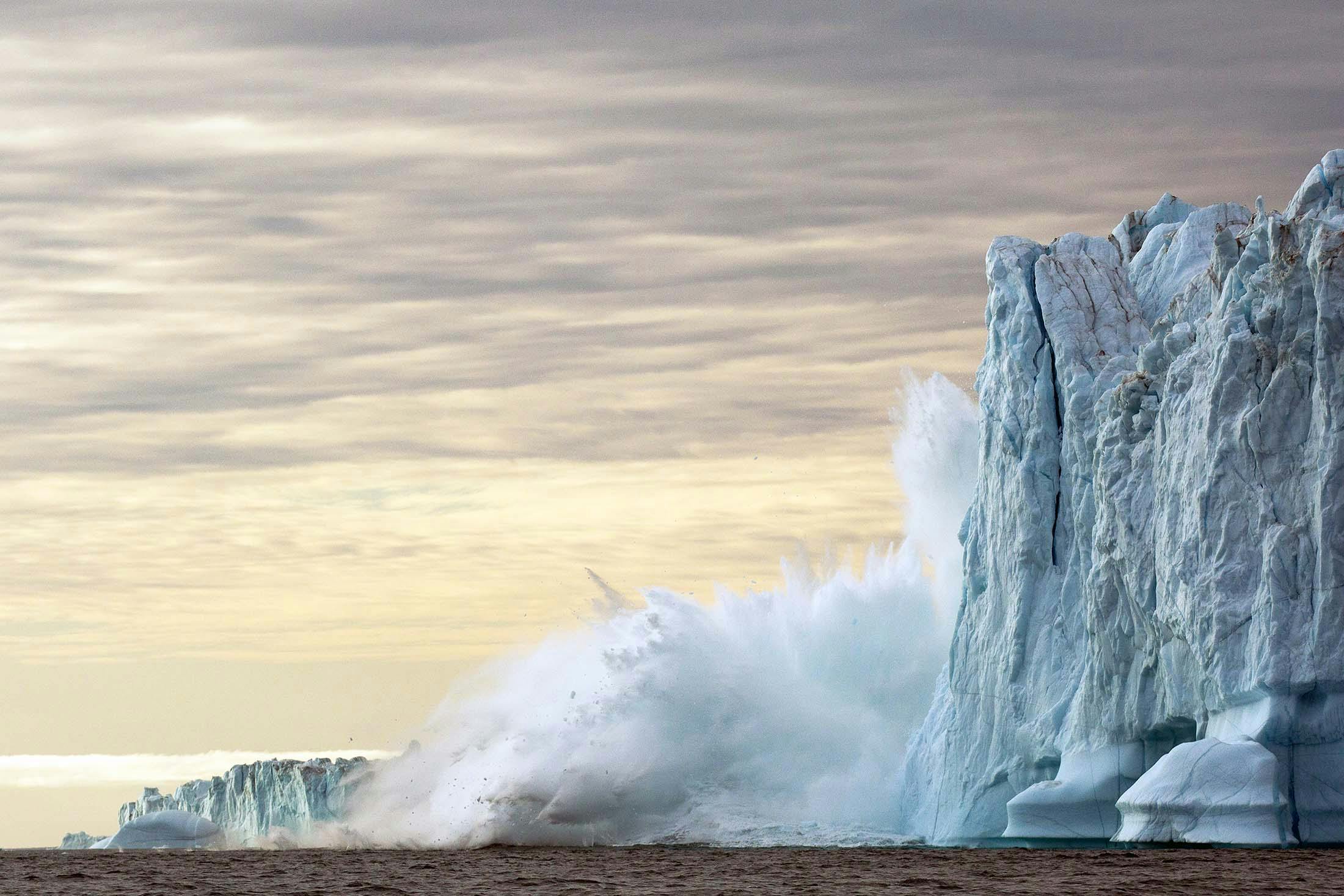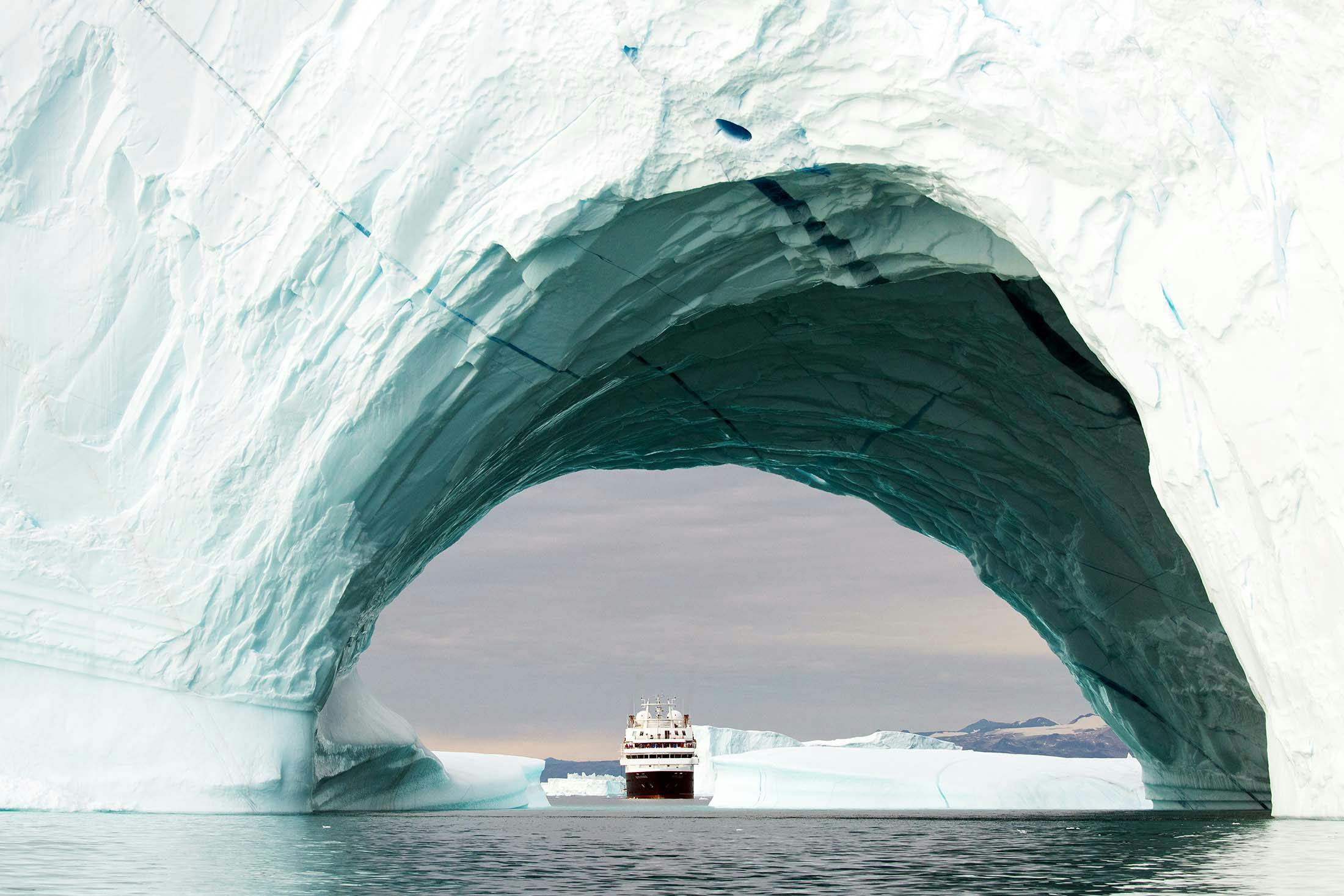Exploring the Hidden Depths and Many Types of Ice in the Arctic Ocean
Describing the mesmerizing qualities of Arctic Ocean ice is like trying to convey the beauty of a rainbow: Its magnificence must be perceived to be truly understood.
On a cruise in the Arctic Circle, you quickly develop an appreciation for the immense variety of ice formations, which make it one of the world’s most dazzling natural wonders. Not only is every single ice formation distinct and strangely beautiful, but each tells a story from a certain point in history, whether recently formed or hundreds of years old. “The Inuit have dozens of words to describe snow and ice,” says Dr. David Millar, a Glaciologist with the Arctic Institute of North America at the University of Calgary. “That’s how varied the landscape is.”
You’re bound to develop a fascination with frozen water when in the Arctic: Its shape, its coloration, its variety, its role in the environment, and its continuously changing form. Arctic ice is characterized by striking colors—ranging from porcelain white to powder blue—which are formed by its varying attributes and tell a story of its age.
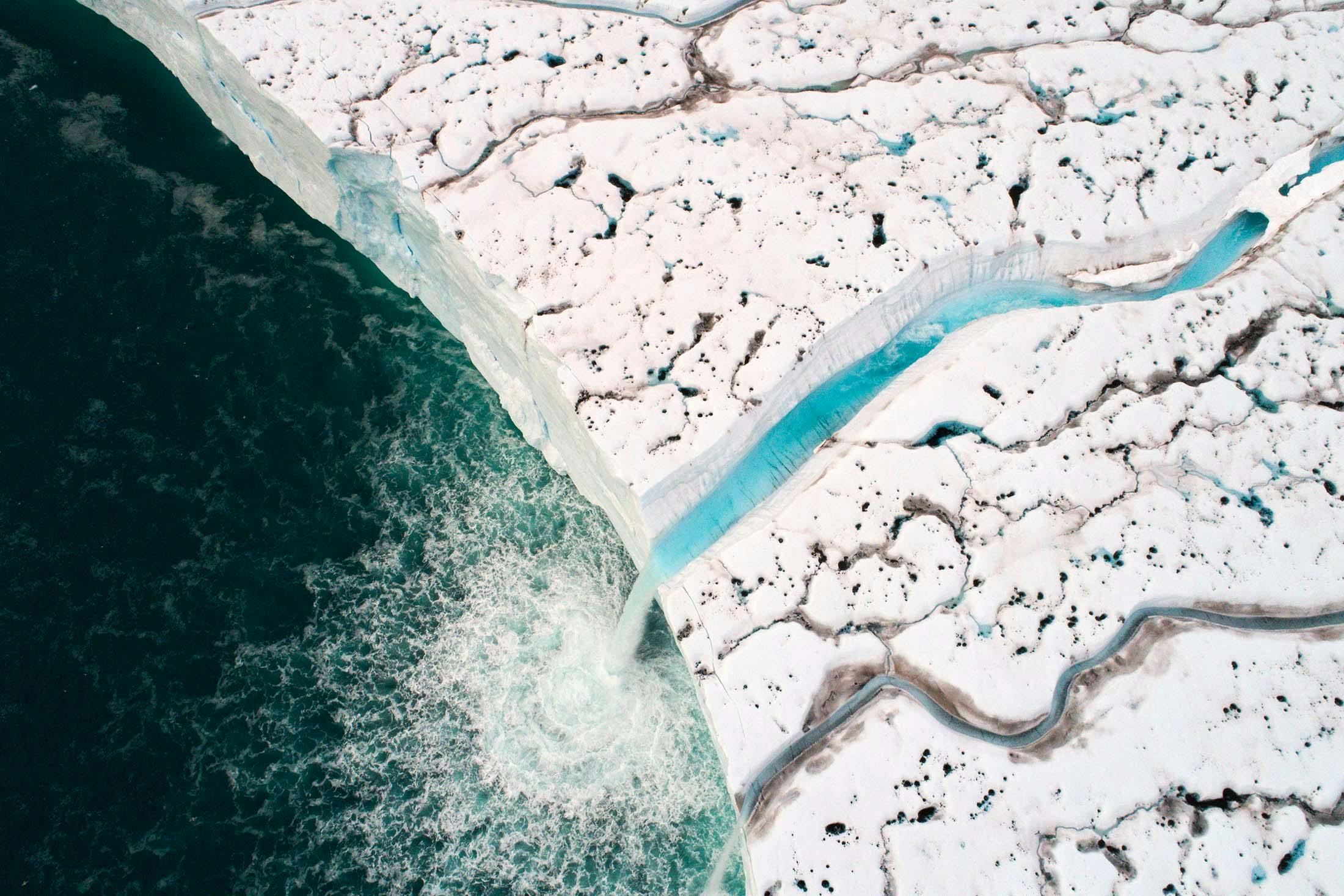
The shape of frozen water
From “shards” to “shelves,” many names are used to describe the Arctic’s various formations of ice.
Long stretches of white ice, up to three meters thick, bob on the surface of the Arctic Ocean. This so-called sea ice, which originates in the ocean, is vastly different from that which forms on land. The smallest type is brash ice — usually the size of ice cubes or as big as your fist. Growlers, on the other hand, are a few meters in diameter and are named for the rumbling sound they emit.
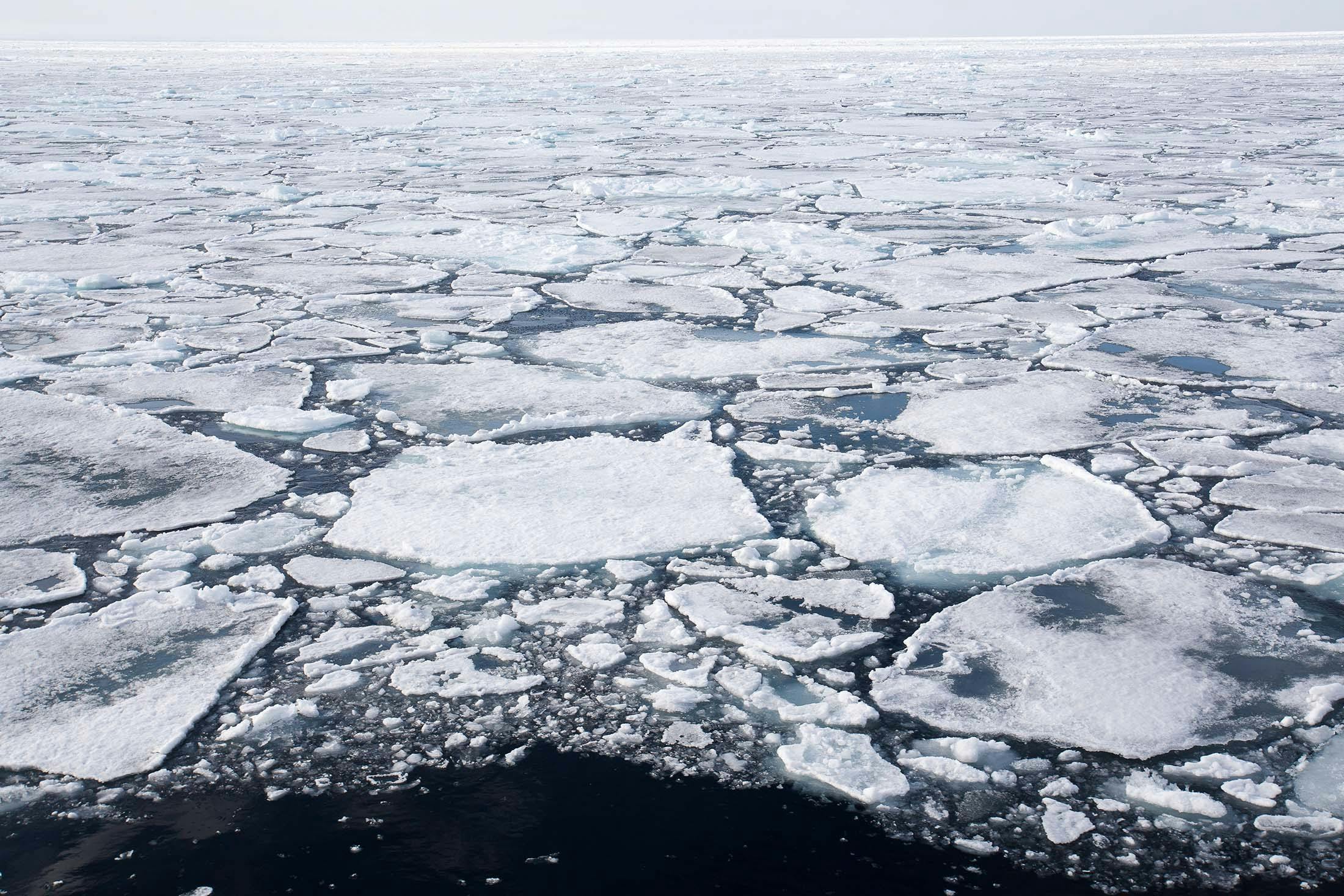
Larger still, icebergs come in a range of shapes and sizes, with different names existing to describe each. The grandeur and the surreal colors of these natural sculptures make them the main spectacle for expedition travelers in the Arctic.
Only one-tenth of an iceberg is visible above the water’s surface, meaning nine-tenths are concealed in the water’s depths, as per the Archimedes principle or law of buoyancy. “Something the same density as seawater will float level with the sea’s surface,” explains Millar, “Whereas something very light, like a ping-pong ball, will float with almost all of its mass above the surface.” Icebergs, however, are nine-tenths the density of seawater, leaving just a small proportion visible from zodiacs and ships.
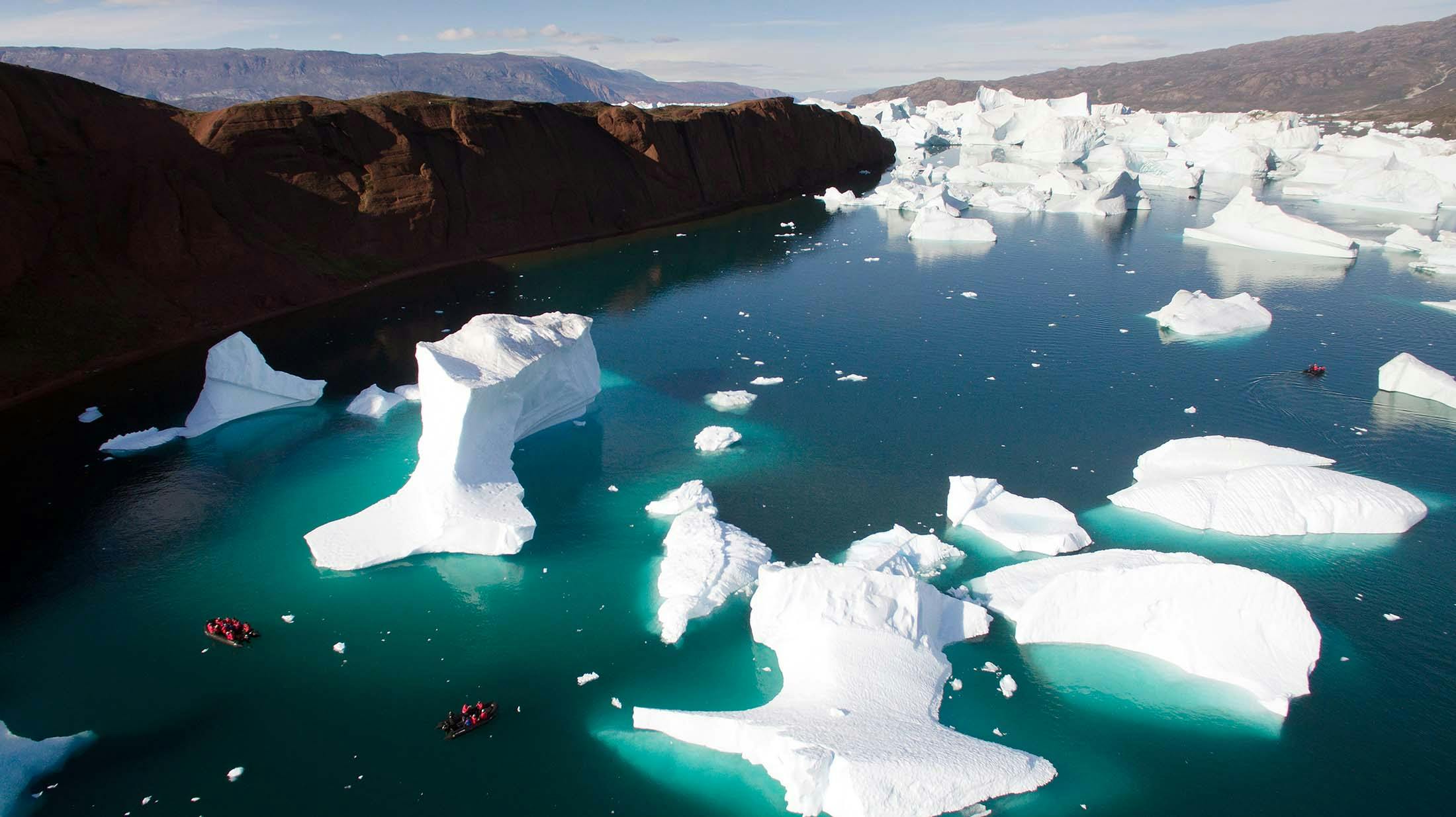
Ice caps, in comparison, are a few hundred meters thick and cover less than 50,000 square kilometers (19,000 square miles) of firm land in the Arctic Circle. “The ice caps slowly deform and flow under their own weight to form glaciers,” explains Millar. “When the glaciers reach the sea, bits break off to form icebergs.” Bergy bits are, as their name suggests, bits of icebergs. But with an average diameter of 10 or 15 meters, they’re actually not as small as their name implies. Learning about them on board a Silversea cruise is a perk of having an expert on hand.
The bluest blues and the whitest whites
The extent of Arctic ice’s illimitable diversity is matched by the variety of its broad-ranging coloration: Countless sparkling hues of whites and blues characterize the scenery here. “The shades of turquoise, aquamarine, and blue that we see in polar ice are one of the most amazing features of the Arctic,” says Jonathan Fuhrmann, one of Silversea’s onboard Glaciologists and a member of the cruise line’s Expedition Team.
These surreal colors exist because of water’s ability to absorb and reflect certain colors of light. It soaks up the red and orange wavelengths of the visible spectrum of light, while reflecting the blue components. This phenomenon is responsible for making the ocean appear blue, while the crest of a crashing wave is white.
Snow, which is composed entirely of tiny ice crystals, looks entirely white because of all the air pockets within it that scatter the incoming light. Glaciers, on the other hand, are made of snow and ice, which accumulates over many years and compresses until those air pockets become minuscule. After several decades, the air bubbles are compressed to a minuscule size that is essentially invisible to the naked eye — it’s at this point the glacial ice starts to look clear and then blue.”
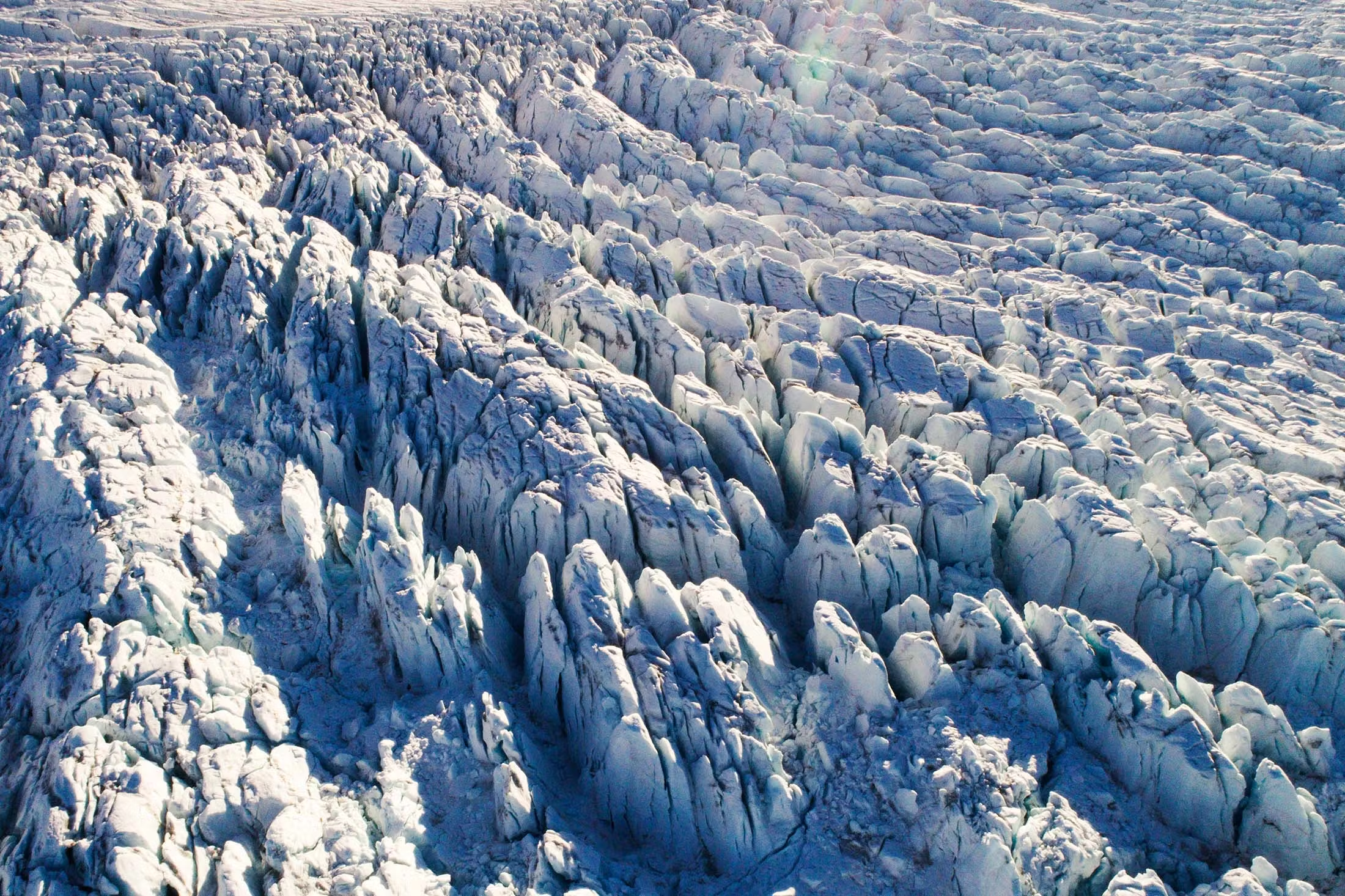
Arctic ice: A reflection of the environment
When this ice begins to melt, the ocean absorbs most of its incoming solar energy and ultimately warms the sea. “Melting ice raises the level of the world’s oceans, and it dilutes the surrounding seas because the ice cap is made from very pure water, not salt water like the oceans,” Millar explains. “This could have an effect on slowing the Gulf Stream, which, in turn, could cool the climate in northern Europe.”
Though substantial and robust, ice is still weak at its core, composed of just tiny little snowflakes that are amassed and compressed over time. While we should admire the ice formations in the Arctic, we must also retain a sense of reverence, because not only does ice characterize the expedition of a lifetime, but it also mirrors the condition of the environment.
Curious about the Arctic? Discover what it’s like and what you can see on a cruise.
